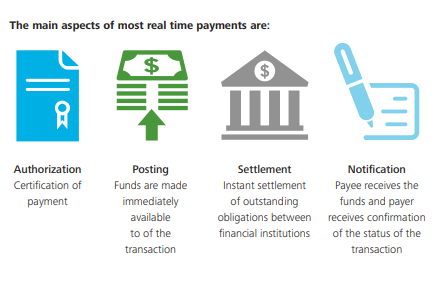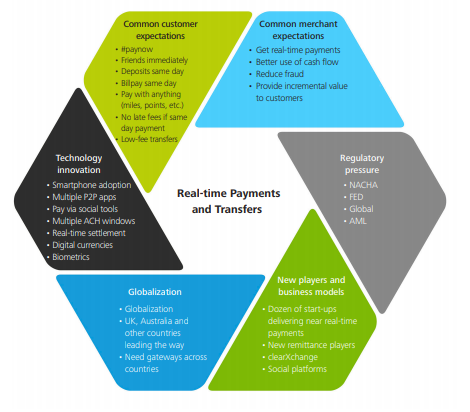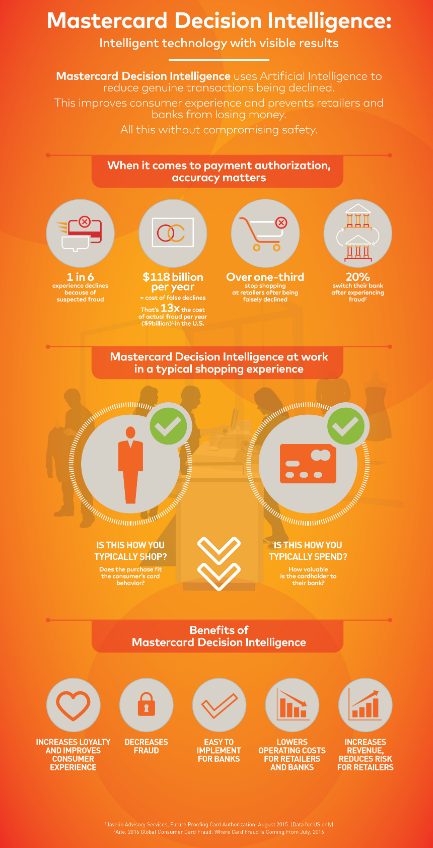The world of payments is evolving so fast that businesses, Financial Institutions (FIs), merchant acquirers and Managed Service Providers (MSPs) are having a hard time keeping up.Today’s consumers enjoy more purchasing options than ever before. Businesses have diversified their products and services, and technology has spurred new payment and transaction methods as dictated by tech-savvy consumers.
In today's payments world, alternate payment methods like mobile wallets, tokens, and payment enabled wearables have stormed the marketplace. While real time payments technology is delivering a better customer experience, it also highlights the need for real time transaction monitoring.
Download a PDF of our guide: Now is the time for Real-Time

Download a PDF of our guide: Now is the time for Real-Time
What is real-time payment processing?
The massive swing towards real-time payment systems globally has allowed consumers, merchants and financial institutions to pay a colleague, friend or customer, as well as settle bills and transfer money instantly. This trend has come about due to escalating consumer demand, with the expectation of faster settlement periods, notifications and consolidated transaction reporting.
Real-time payment systems offer an instant, round the clock, interbank electronic fund transfer service, using payment channels like smart phones, tablets, digital wallets, and via apps or the internet.
 Source: Deloitte
Source: Deloitte
The main drivers behind real-time payments
At the forefront of the main drive for change, is higher expectations from merchants and consumers. Other key factors are major advancements and innovations in technology, as well as a profound shift in business models. Additionally, there's the adoption of new payment platforms and solutions, updated regulations addressing payment effectiveness - and of course, security and compliance.

What real-time payments means for merchants & acquirers
With so many aspects of the business environment changing, merchants are realizing the need to adjust their business models to the new normal as quickly as possible to maintain profitability.
They are rapidly re-evaluating the technology within their payments infrastructure to better understand and support newly popular payment methods, as well as the rapid growth of eCommerce.
Even brick and mortar locations are being impacted. For example, merchants re-opening physical stores may find that with the shift to shopping online, traffic patterns have changed.
How real-time transaction monitoring impacts merchants and acquirers
Retailers need granular data on where growth and profitability are declining and increasing to adjust their strategies.
Merchant acquirers and processors need to provide a value-added service to their consumers, providing them with real-time information on where business and transactions are moving. They need to show how that matches with profitability, as well as how each channel is handling the added transaction load. Not only can the ability to provide payment data help merchant acquirers and processors attract and retain new clientele, it can even become the next big revenue source for them in the face of declining merchant fees.
What real-time payments means for banks and financial institutions
Real-time payments by banks, financial institutions and businesses has seen enormous growth in recent months, partially as a consequence of COVID-19. In the U.S. this growth is being lead by the Real-Time Payments (RTP) Network. This growth is expected to continue as many banks are embracing digital transformation, and making changes to their digital payments infrastructure.
But the transformation until now has been slow, with many larger banks facing the challenge of integrating new systems into outdated legacy systems, or apprehension over major digital transformation overhauls.
How real-time transaction monitoring impacts banks and FIs
Navigating change with a relatively new technology like real-time payments, requires detailed, actionable insights into complex payments environments. Real-time insights enables banks and financial institutions to gain the business intelligence they need for digital transformation. They can utilize location and contextual data to create better customer experiences, create new data-based products and make more informed decisions in complex scenarios. By carrying out effective monitoring and analysis, they can detect even the smallest changes and trigger immediate action.
Is your business coping under increasing demand from new and emerging technologies?
Key reasons why transaction monitoring is crucial
Analytics for real-time payments is vital within the financial services industry. It's an industry dealing with massive data volumes, and prone to latency and volatility. The need to detect complex patterns in real-time, correlate information, analyze and act on this information immediately is critical.
Monitoring for money laundering & payment fraud detection
The rising incidence of financial crime, including money laundering and payment fraud can cause not only great financial loss, but also significant damage to a bank or FI's corporate image. More so than in other industries, the corporate identity of a financial services provider is critical to its existence - as well as a reflection on its credibility. Fraud checks and sanctions screening are already happening, and Anti Money Laundering - or AML transaction monitoring technology is the next logical solution.
AML transaction monitoring offers comprehensive, anomaly detection mechanisms to help banks and financial institutions protect themselves from fraudulent activities. With transaction monitoring, FIs can easily convert data regarding financial crime and suspicious transactions into risk management solutions.
Monitoring for false positives
With the ability to detect fraud and financial crime, there’s also the danger of losing clientele to overprotective fraud rules that produce false positives within their alerts. It's a fine balancing act. Businesses need to be careful to not block or inconvenience customers who are attempting to make genuine purchases, while retaining the necessary controls to prevent suspicious activity.
Monitoring and analyzing changes in revenue distribution
Real-time analytics enable end-to-end visibility into merchant transactions, and also their source. The the ability to identify when transaction issues occur on a website, for example, or a bricks and mortar store, means merchants can use predictive analytics to proactively address customer experience.
Merchant acquirers and processors can also give retailers insight into the details of every transaction, revealing whether it was approved or declined - along with reasons it was declined, or unusually slow processing times - and why.
Monitoring to enable top level visibility
Transaction monitoring provides insights and information which top level executives can use to tell them about profitability across all channels. This enables them to access KPI dashboards across a range of devices and locations.
Monitoring and managing new payment channels
During the COVID pandemic, businesses have learned that customer behavior changes regularly. For example, a rise in COVID cases tends to cause an increase in the use of eCommerce platforms. This in turn causes an immediate surge in server activity. With transaction monitoring, businesses can gain insights into the use of each channel and how it's performing.
How machine learning and AI is impacting risk
For decades, the banking industry has relied on pre-defined rules to identify potentially fraudulent activity. These rules-based AML systems, while necessary in detecting financial crime, tend to cast a very wide net, and produce a large number of false positive alerts. Even so, they still need to be investigated and ruled out.
Once investigated, these alerts very often turn out to be legitimate transactions but have somehow breached one or other of the bank’s rules. This carries the risk of a negative impact on customer experience, costing valuable time for both clients and fraud teams.

Source: Mastercard
Without the benefit of machine learning technologies, the sheer volume of false positive alerts makes finding and focusing on real suspicious activity more difficult. One of the most effective processes to detect money laundering is the integration of machine learning-based adaptive behavioral analytics. alongside traditional rules-based methods.
Transaction monitoring - a proactive approach
Any industry can benefit from data and metrics in many ways. Huge eCommerce companies like Amazon and eBay have long been using transaction analytics and insights to drive sales and provide more streamlined services to their customers. By carefully studying the browsing behavior of customers, their shopping habits, needs and product preferences they can tailor each product specifically to the consumer.
Key takeaways for merchants
For retailers, transaction monitoring identifies poorly performing payments systems, which lead to queues and bottlenecks, increasing the likelihood of abandoned purchases and dissatisfied customers.
Key takeaways for merchant acquirers
For merchant acquirers, ongoing monitoring mitigates risk, and for many, it’s a requirement by regulatory authorities for certain merchant types.
Key takeaways for financial institutions
Transaction monitoring allows financial institutions to see customer transactions and analyze a customer’s historical information based on past and predicted future activity. These important insights can spot abnormal behavior and curtail fraud attempts.
IR Transact brings real-time visibility to your entire payments environment. Merchants, acquirers and payments processors can gain unparalleled insights into transactions and trends, streamlining the payments experience, from end-to-end.
Download 4 Key Business Drivers for Real-Time Transaction Insights for more information on how you can turn real-time data into insights that can help you navigate the changing payments world.
Download a PDF of our guide: Now is the time for Real-Time

Download a PDF of our guide: Now is the time for Real-Time






